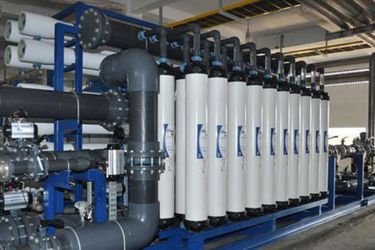Optimal Ultrafiltration Uses For Beverage And Dairy Companies
By Nick Nicholas

When you’re sipping on a cold soda or snacking on a creamy piece of cheese, you probably don’t really think about what went into making your food or beverage. Maybe you already know because you saw a random episode of ‘How It’s Made’ on TV discussing ultrafiltration uses in the beverage industry while you were channel-surfing on a lazy afternoon. Either way, aside from the automated production-line machines, one of the most important things that goes into the making of any soda, juice, wheel of cheese, or gallon of milk is water. Producing beverages and dairy products uses substantial amounts of water within production processes.
Dairy product production facilities use water more for cleaning purposes than as an ingredient. Sanitation is heavily important when making consumables. Dairy products, in particular, can be quite susceptible to certain bacteria. Water is also used for cooling purposes and steam generation.
Beverages, being liquids, contain water to some degree. In fact, water is likely the most important ingredient in beverage production. Water is also used to wash out the bottles that the products will be packed and transported in. Most of the wastewater produced by beverage companies comes from bottle-washing.
In this article, I will talk about ultrafiltration (UF) uses for the treatment of dairy and beverage product wastewater streams. I will also mention its use to treat process water for both beverage and dairy products.
First, I will discuss the composition of the particular wastewater compositions for each industry.
Dairy Wastewater Composition
- Total suspended solids (TSS)
- Biochemical oxygen demand (BOD)
- Chemical oxygen demand (COD)
- Nitrogen
- Phosphorus
- Fats, oils, and grease (FOG)
Beverage Wastewater Composition
- Sugars
- Sodium hydroxide
- Detergent
- Chlorine
- Sulfates
In order to keep the facility, and by proxy the products in question, safe from microbial pathogens, frequent sterilization of equipment is required. Of course, you cannot sterilize with water that has organic and inorganic particulate in it. Therefore, raw water must be properly treated before its use. Of course, after washing and sterilization of products and equipment, the wastewater that drains off can contain pollutants that are not ideal for discharging without treatment. UF is almost always useful for obtaining water free of microbial pathogens, but it also can be used for dealing with trace amounts of FOG that are in the wastewater from rinsing the products. UF uses can include applications such as polishing filtration for wastewater treatment and as a pretreatment filter for a reverse osmosis (RO) system for sterilization water.
Beverage production needs high-quality water for both production of these beverages and for bottle-cleaning and sterilization. It’s obvious that this water would need to be drinking-water quality for use as an ingredient. However, for bottle sterilization it would also need to be of similar quality to avoid contaminating the inside of the bottle packaging. With that in mind, UF makes a powerful complement to an RO system, which are very popular in the production of drinking water. In fact, companies like PepsiCo and Glaceau advertise on their websites that Aquafina and Smartwater are both made using an RO process. An RO system, best suited for treating dissolved solids, tends to require some level of pretreatment to protect its membranes from fouling. UF uses include the removal of solid particulate matter and bacteria/viruses from surface water sources.
In this article, we talked about UF uses for the treatment of raw water, ingredient water, and the treatment of wash wastewater in the dairy and beverage industry. To recap, ultrafiltration can be an ideal sustainable treatment solution for the removal of fine suspended solids, proteins, complex sugars, and microbial pathogens in both dairy and beverage applications.
